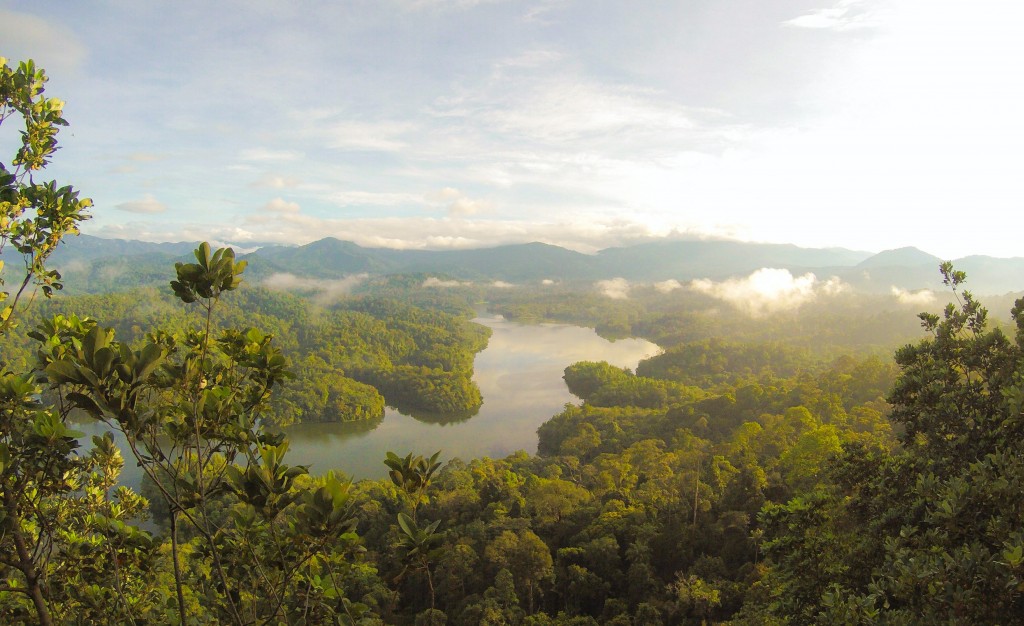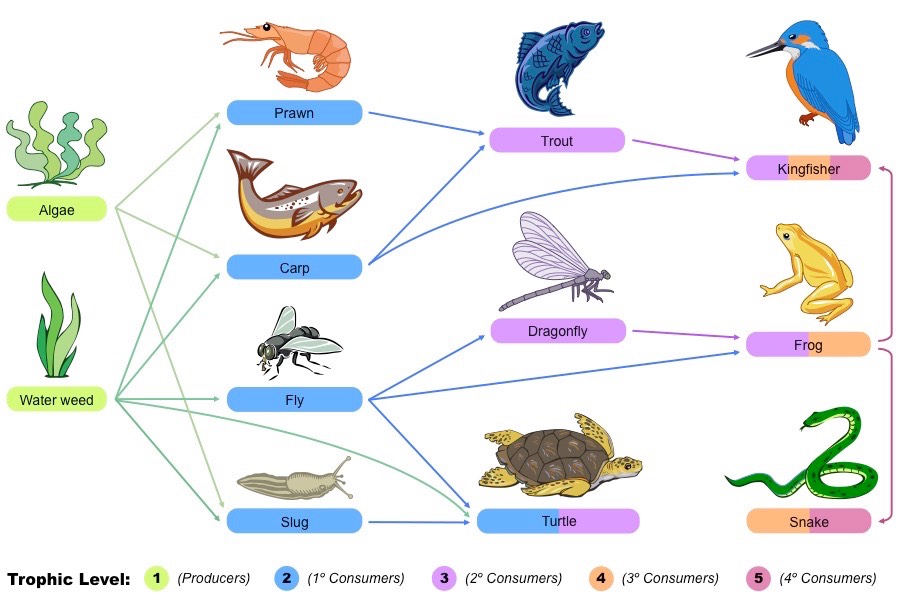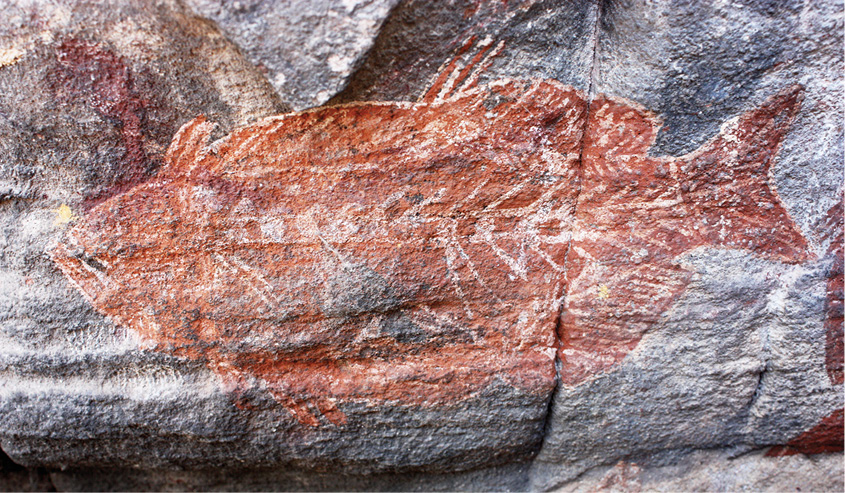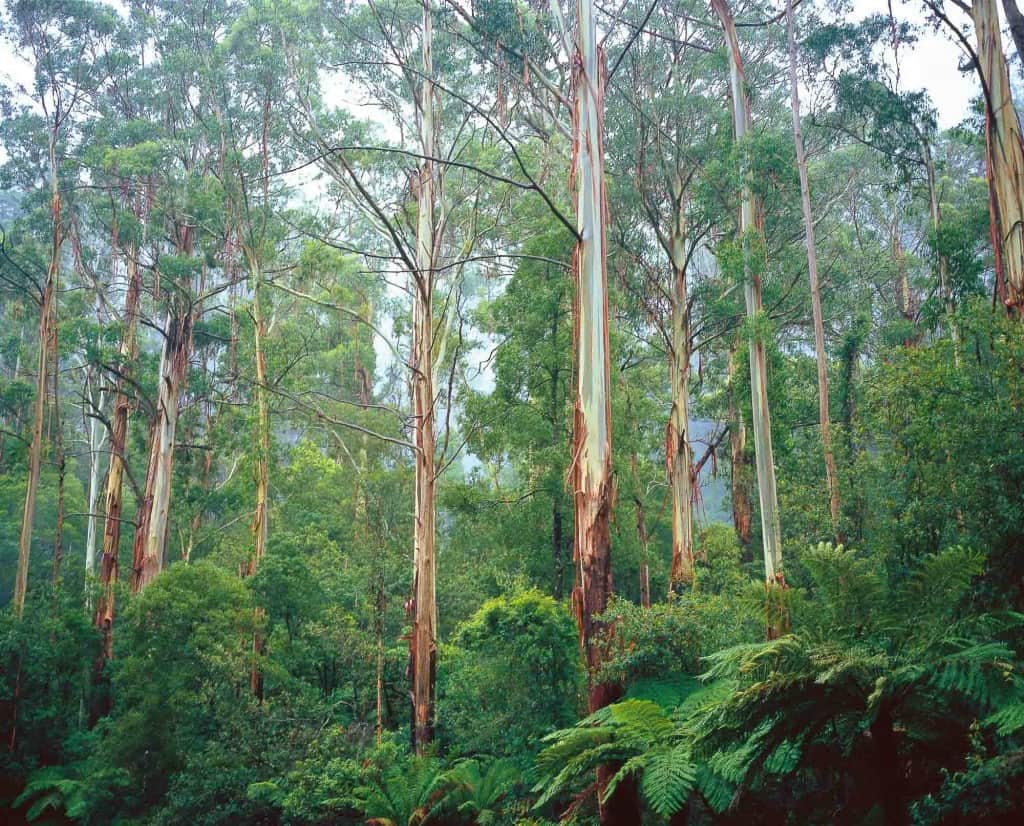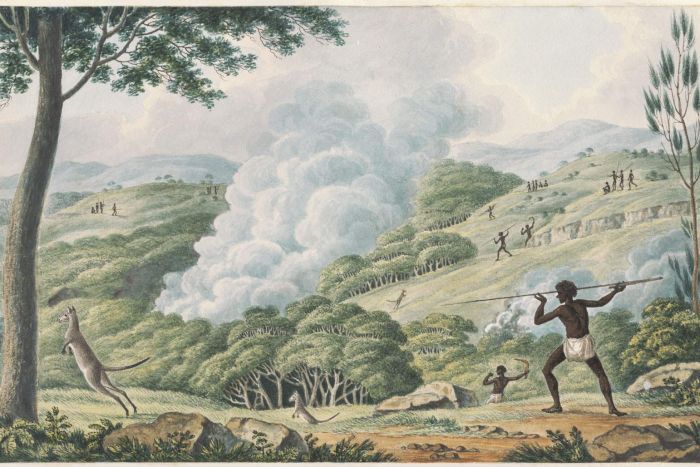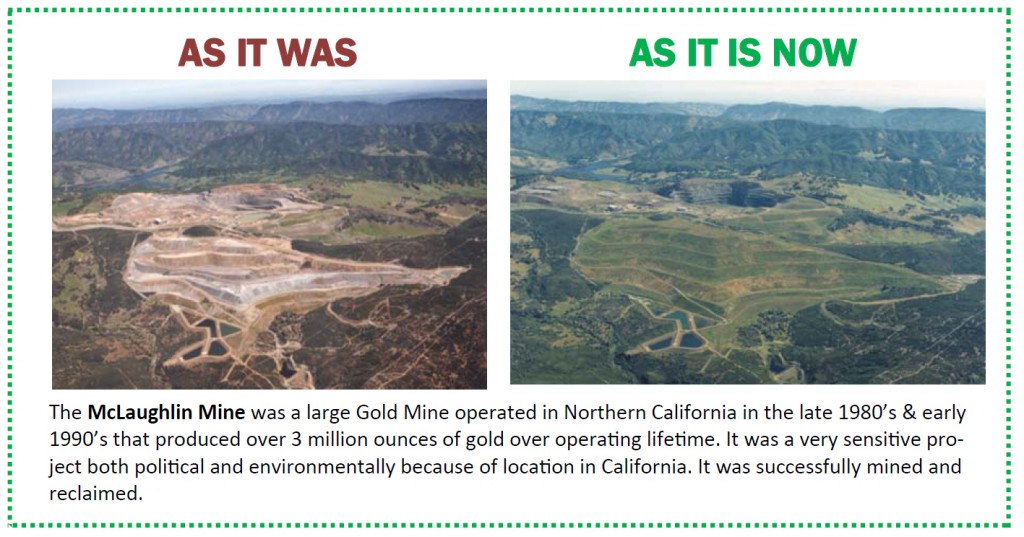Welcome to the final module of the Year 11 HSC Biology syllabus, Module 4: Ecosystem Dynamics!
This is the part where we round off everything we learnt in modules 1-3 and broaden the spectrum to gain a cohesive lens through which we can explore ecosystems and their dynamics.
So what exactly does ‘Ecosystem Dynamics’ mean?
In this guide, we’ll break down Module 4 by its three inquiry questions and delve into an overview of its syllabus dot points!
Let’s dive into Ecosystem Dynamics!
Overview of Ecosystem Dynamics
Population Dynamics
Past Ecosystems
Future Ecosystems
Overview of Ecosystem Dynamics
Firstly, let’s take a look at the content focus NESA provides us with below:
In Module 4: Ecosystem Dynamics, using our knowledge of evolutionary biology and biodiversity, we can begin to explain how population dynamics of different species on Earth change over time.
We can supplement our existing knowledge using fossil records as well as geological evidence to explain both abiotic and biotic relationships.
Breaking this down further, we can identify 3 core areas:
- Explaining population trends using evolutionary theory and biodiversity
- Determining abiotic and biotic relationships through geological and fossil evidence
- Determining methods in which humans can minimise impact on biodiversity
Haven’t revised or taken notes for Module 1 yet? Check out our Guide to Year 11 Biology Module 1: Cells as the Basis of Life for help!
Population Dynamics
Inquiry Question 1: What effect can one species have on the other species in a community?
This inquiry question deals with the relationships that can be established between different species and how they may be beneficial, neutral or detrimental.
Some key terms to define which are essential to fully understanding this topic:
Abiotic: Physical rather than biological.
Biotic: Relating to or resulting from living organisms.
Abiotic factors create various conditions which suit different types of organisms and hence affect biotic factors.
| Abiotic | Biotic |
|---|---|
We can expand on some of the key biotic factors below:
Predator-prey relationships
At its simplest, a predator is an organism which kills and eats another organism for sustenance. The prey is of course the organism which is eaten.
This relationship is often more complex than a single direct chain and is best represented as a food web.
Image sourced from BioNinja
Competition
Organisms may compete with members of their own species or members of another species.
This results in 2 main sub-categories of competition:
- Intraspecific competition- between members of the same species
- Interspecific competition- between members of a different species
Plants may compete for soil nutrients or access to sunlight. Animals may compete for food or mates.
Symbiotic relationships
A symbiotic relationship is a relationship between 2 species in which at least one benefits.
The 3 basic modes of symbiosis are:
- Parasitism: A trophic relationship where a parasite feeds on its hosts’ tissues or food in the host’s gut. The parasite benefits but the host may be harmed
- Mutualism: Relationship which occurs when 2 different species derive some benefit from coexisting together
- Commensalism: Relationship where one organism benefits while the other is neither benefited or harmed
A separate symbiotic relationship you might come across is allelopathy. This is where one plant produces certain molecules which can either benefit or harm another plant nearby.
Sampling techniques
Being able to measure both the abundance and distribution of species is essential to understanding the biodiversity of an ecosystem.
It’s important to note that abundance and distribution do NOT mean the same thing!
Abundance describes how many members of the species live throughout the ecosystem. Increases/decreases of the species’ abundance is caused by immigration or emigration of the species, an influx or deflux of predators or prey, and a change in the structure of the habitat, as well as the weather and seasonal changes.
Distribution of a species describes the area where it is found, how a species is distributed gives clues about how it is interacting with the environment. Distribution differs due to the variance in the environment with the variety of temperature, abiotic and biotic factors determining who can survive.
| Sampling Technique | Equipment and Method | Advantages | Disadvantages |
|---|---|---|---|
| Transects | - Used to plan sketches and profile sketches - A form of line or rope which you walk along - Study is undertaken by moving along the line and recording which species are located at each point | - Can be used to illustrate a particular gradient or linear pattern along which species of plants and animals are living - Can be used on any random area - Broad view of community land use - Causes minimal disturbance to the environment | - Not accurate and cannot cover long distances - The line can be interfered with - Only used on plants and animals that do not move - Cannot be used for a large abundance of plants |
| Quadrat Sampling | - A “quadrat” is a simple wire/wooden/plastic frame which is dropped onto the ground at random throughout the study area. Number of species in the quadrat is recorded | - Easiest method, uses least amount of effort/time - Quick - Inexpensive - Minimal disturbance to the environment | - Not accurate - depends a lot on chance - Only used on plants and animals that are slow moving |
| Capture-recapture | - Tags to mark the animals - Calculated by the number of animals in the first capture x number of animals in the second/number of recaptured | - Good for determining population of animals - Easy to do - Simple method | - Is inconsistent → the most inaccurate between the three methods - Requires a large sample - Only works for fast moving animals - Cannot calculate the diversity of the environment - Disturbance to the environment and time consuming |
Finding it hard to wrap your head around this topic? Get support with our Biology Tutoring Services in Sydney!
Past Ecosystems
Inquiry question 2: How do selection pressures within an ecosystem influence evolutionary change?
This inquiry question deals with how we can use paleontological and geological evidence to analyse past ecosystems and how they might have evolved to form our modern environment.
We’ll be exploring how processes and phenomena such as Aboriginal Rock Paintings and ice core drilling, combined with age dating techniques can provide us with evidence of past environmental changes.
First off, it’s important that we understand some of the key terms we’ll be dealing with:
Paleontology: “scientific study of life of the geologic past that involves the analysis of plant and animal fossils” – Encyclopedia Britannica
Geology: “The fields of study concerned with the solid earth” – Encyclopedia Britannica
Aboriginal Rock Paintings
Aboriginal artworks are an invaluable primary source from which we can observe the changing patterns of life in Australia throughout the ages.
The tradition of rock painting provides a detailed recording of people’s environment, not only depicting prominent life forms at the time but also periods of transition or extinction.
Image sourced from ANU
Radiometric dating techniques can be used to extract more historical detail about the artworks. Scientists are able to approximately gauge the age of the work to provide a timestamp for the works.
Note: It would be a great idea to have some specific examples of Aboriginal painting sites! A great example you could use are the West Kimberly Rock Paintings!
Rock structure and formation (Banded Iron Formations)
In Northern Australia, 2500 million year-old Archaean rocks were examined and were found to have biomarkers (chemical evidence) for the existence of cyanobacteria.
Oxidised rocks (such as banded iron and red bedrock formations)
- Are examples of geological evidence towards origin of photosynthetic life
- The oxygen produced by autotrophic organisms collected in the rocks until they were fully saturated
- As atmospheric oxygen stabilised banded iron formations stopped forming
- Uraninite (UO2) provides evidence for an increasingly oxygenated atmosphere. Uraninite is unstable and readily decays if exposed to oxygen.
- Deposits of uraninite are at least 2300 million years old. Calculations using known breakdown rate estimate that the atmosphere at that time had less than 1/100 of oxygen compared to today.
Both the banded iron formations and Archaean rocks provide us with a sequence of events which surrounded the Great Oxygenation Event.
Ice Core Drilling
Ice core drilling is similar to the formation of sedimentary rocks, antarctic snow and ice form as layers.
The deepest layers are the oldest, representing ancient deposition events.
As snow falls, particles of gas are trapped in the layers of snow. Where it is sufficiently cold, the snow will form ice and trap dust particles, ash or pollen which can serve as proxy data to understand Earth’s past climate.
Methods of dating:
- Radiometric dating: Radioactive dating is a method of dating rocks and minerals using radioactive isotopes. This method is useful for igneous and metamorphic rocks, which cannot be dated by the stratigraphic correlation method used for sedimentary rocks.
- Gas analysis: Measurement of the proportion of gases and the ratio of certain isotopes in certain gases can allow us to infer past global temperatures or atmospheric gas compositions.
The evolution of Australian sclerophyll forests
In the past, Australia was temperate, moist and dominated by rainforests, which is indicated by fossils of the plants Glossopteris and Gangamopteris.
As Australia became warmer and drier, rainforests became less abundant, and grasslands and sclerophyll communities expanded. Sclerophyllous vegetation (e.g. eucalypts and acacias) and grasses have adapted to withstand these drier conditions, and therefore thrived when rainforest plants could not.
Image sourced from Steve Parish
The evolution of mammals in Australia was influenced mainly by environmental changes.
Prior to human settlement, Australia was home to megafauna which became extinct due to excessive hunting by Indigenous people.
Over time, due to continental shifts and changing environment from wetter and cooler to hotter and dryer, Australian species had to adapt correspondingly.
For example, Australian kangaroos are descended from tree-dwelling, rodent-like ancestors which fed on stems and leaves. As sclerophyll forests and plains replaced the jungle-land, they had to adapt. Overtime, they became ground-dwelling and developed rumination habits to adapt to a new diet of tougher, drier vegetation.
Future Ecosystems
Inquiry Question 3: How can human activity impact on an ecosystem?
Our final inquiry question rounds the module off. Using what we’ve learnt about the factors that drove the alterations in past, historical environments, we can apply this knowledge to reduce our impact on current global ecosystems.
Here, we explore how human activity has impacted ecosystems as well as current and developing strategies to reduce this impact.
Historically, human intervention has played a significant role in shaping ecosystems since the origin of humankind.
Human intervention is believed to have impacted the distribution and abundance of Australian species (mostly negatively).
The hunting of megafauna by Indigenous people about 100,000 years ago is believed to have caused the extinction of Australian megafauna. Fire is also believed to have had an impact – some species managed to adapt (e.g. fire-tolerant sclerophyll) and therefore thrived, while others became extinct.
Below is a painting depicting Indigenous people using fire to hunt kangaroos.
Image sourced from ABC
Furthermore, the arrival of Europeans resulted in industrialisation, pollution, land clearing, farming and the introduction of new species, which severely impacted the distribution and abundance of native plants and animals.
Currently, the main factor negatively impacting biodiversity is human activity. The Earth’s atmosphere plays an important role in the existence and survival of life on Earth.
Climate Change
The greenhouse effect is a natural process that warms the Earth’s surface. When the sun’s energy reaches the Earth, some of it is reflected back and some is absorbed. Greenhouse gases include water vapour, carbon dioxide, methane, nitrous oxide, ozone and some other artificial chemicals.
Excessive release of these gases into the atmosphere causes global temperature fluctuations, usually characterised by warming temperatures. Have a look here to see an animated diagram of the process!
There are also threats to biodiversity including:
- Climate change – sea level rising
- Deforestation which leads to fragmentation of ecosystem
- Agricultural impacts – burning of native shrubs + runoff + pesticides
- Invasive species – no predators
- Overexploitation
- Pollution
The restoration of damaged ecosystems
Mining can have devastating impacts on ecosystems. Erosion, water contamination, soil contamination and chemical runoffs are just some of the impacts that mining can have on the environment.
To ensure that damages are minimised, mining corporations must abide by strict guidelines and a report must be submitted after mining operations detailing how restoration of the land is to happen.
Some strategies implemented to minimise environmental impacts of mining include:
- Controlling gas emissions
- Regular testing of waterways for signs of chemical contamination
- Controlling dust pollution
- Treatment of chemical waste
Image sourced from the Mining & Metallurgical Society of America
Agriculture is a vital facet of the economy and key to the smooth functioning of society as a whole. However, agricultural practices must also be carefully regulated in order to minimise environmental impacts.
These impacts can occur as a result of:
- Soil erosion
- Land clearing
- Use of pesticides, insecticides and fungicides
- Habitat degradation
Some strategies to manage these issues include:
- Re-establishing ground cover
- Growing crops on slopes
- Replacing flood irrigation with drip irrigation
- Using timed sprinklers
- Using natural means of pest-management
And that wraps up out guide to Year 11 Biology Module 4: Ecosystem Dynamics – good luck!
Make sure you check out our other Year 11 Biology module guides below:
- Module 1: Cells as the Basis of Life
- Module 2: Organisation of Living Things
- Module 3: Biological Diversity
Aiming for a Band 6 in HSC Biology? Check out all of our tips to scoring one here!
Looking for some extra help with Ecosystem Dynamics?
We have an incredible team of Year 11 Biology tutors and mentors who are current HSC syllabus experts!
We can help you master the Year 11 Biology syllabus and ace your upcoming Biology assessments with personalised lessons conducted one-on-one in your home or at one of our state of the art campuses in Hornsby or the Hills!
We’ve supported over 8,000 students over the last 11 years, and on average our students score mark improvements of over 20%!
To find out more and get started with an inspirational Year 11 Biology tutor and mentor, get in touch today or give us a ring on 1300 267 888!
Alex Gao is an Art of Smart mentor and blogger who is passionate about teaching students the skills and know-how of high school. Alex has a great interest in the field of Biology, avidly blogging about the topic whilst also aspiring to become a Biomedical Engineer. Alex graduated in 2018 and was listed on the Distinguished Achievers list for Advanced English, Extension 1 English and Biology.

